James J. Davis
DeepSpeed4Science Initiative: Enabling Large-Scale Scientific Discovery through Sophisticated AI System Technologies
Oct 11, 2023



Abstract:In the upcoming decade, deep learning may revolutionize the natural sciences, enhancing our capacity to model and predict natural occurrences. This could herald a new era of scientific exploration, bringing significant advancements across sectors from drug development to renewable energy. To answer this call, we present DeepSpeed4Science initiative (deepspeed4science.ai) which aims to build unique capabilities through AI system technology innovations to help domain experts to unlock today's biggest science mysteries. By leveraging DeepSpeed's current technology pillars (training, inference and compression) as base technology enablers, DeepSpeed4Science will create a new set of AI system technologies tailored for accelerating scientific discoveries by addressing their unique complexity beyond the common technical approaches used for accelerating generic large language models (LLMs). In this paper, we showcase the early progress we made with DeepSpeed4Science in addressing two of the critical system challenges in structural biology research.
Logic Shrinkage: Learned FPGA Netlist Sparsity for Efficient Neural Network Inference
Jan 02, 2022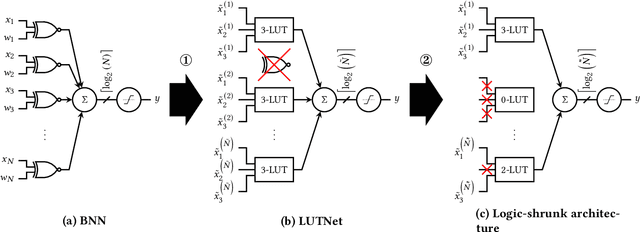
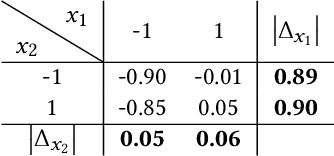
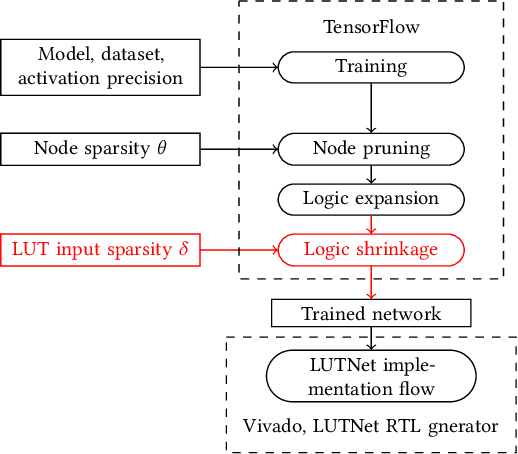

Abstract:FPGA-specific DNN architectures using the native LUTs as independently trainable inference operators have been shown to achieve favorable area-accuracy and energy-accuracy tradeoffs. The first work in this area, LUTNet, exhibited state-of-the-art performance for standard DNN benchmarks. In this paper, we propose the learned optimization of such LUT-based topologies, resulting in higher-efficiency designs than via the direct use of off-the-shelf, hand-designed networks. Existing implementations of this class of architecture require the manual specification of the number of inputs per LUT, K. Choosing appropriate K a priori is challenging, and doing so at even high granularity, e.g. per layer, is a time-consuming and error-prone process that leaves FPGAs' spatial flexibility underexploited. Furthermore, prior works see LUT inputs connected randomly, which does not guarantee a good choice of network topology. To address these issues, we propose logic shrinkage, a fine-grained netlist pruning methodology enabling K to be automatically learned for every LUT in a neural network targeted for FPGA inference. By removing LUT inputs determined to be of low importance, our method increases the efficiency of the resultant accelerators. Our GPU-friendly solution to LUT input removal is capable of processing large topologies during their training with negligible slowdown. With logic shrinkage, we better the area and energy efficiency of the best-performing LUTNet implementation of the CNV network classifying CIFAR-10 by 1.54x and 1.31x, respectively, while matching its accuracy. This implementation also reaches 2.71x the area efficiency of an equally accurate, heavily pruned BNN. On ImageNet with the Bi-Real Net architecture, employment of logic shrinkage results in a post-synthesis area reduction of 2.67x vs LUTNet, allowing for implementation that was previously impossible on today's largest FPGAs.
Enabling Binary Neural Network Training on the Edge
Feb 10, 2021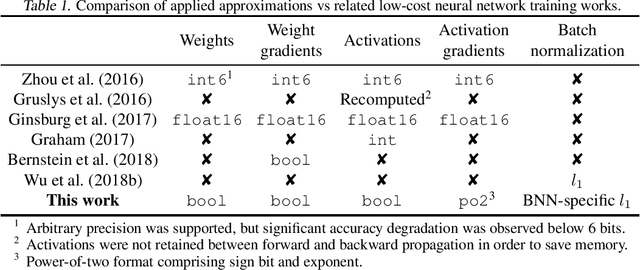
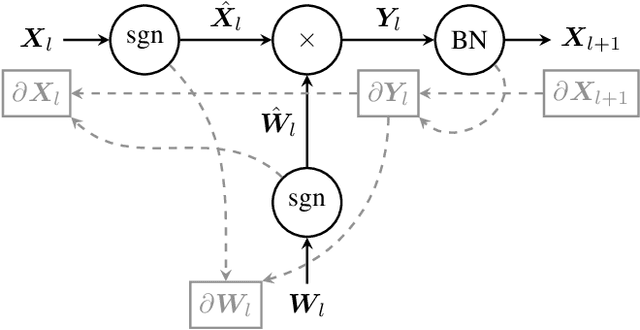
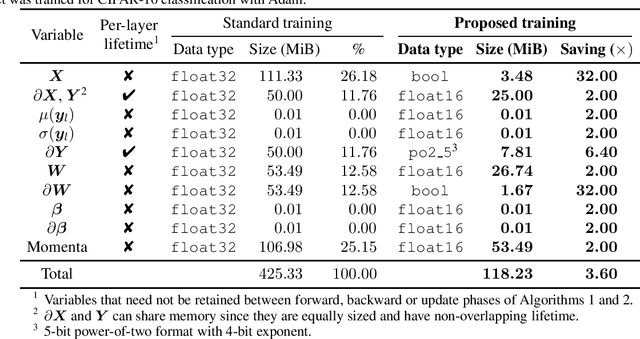
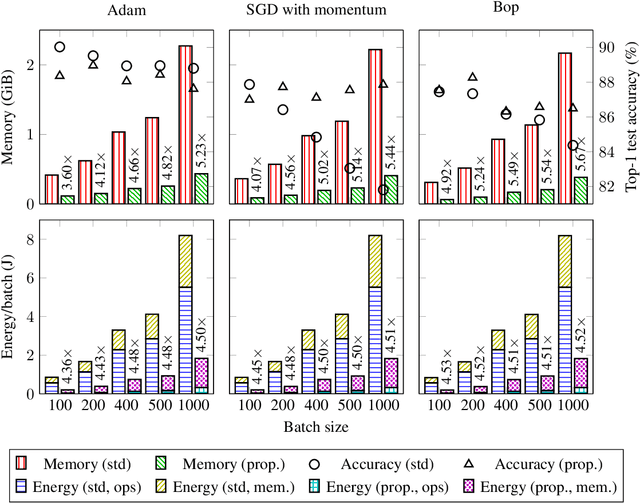
Abstract:The ever-growing computational demands of increasingly complex machine learning models frequently necessitate the use of powerful cloud-based infrastructure for their training. Binary neural networks are known to be promising candidates for on-device inference due to their extreme compute and memory savings over higher-precision alternatives. In this paper, we demonstrate that they are also strongly robust to gradient quantization, thereby making the training of modern models on the edge a practical reality. We introduce a low-cost binary neural network training strategy exhibiting sizable memory footprint reductions and energy savings vs Courbariaux & Bengio's standard approach. Against the latter, we see coincident memory requirement and energy consumption drops of 2--6$\times$, while reaching similar test accuracy in comparable time, across a range of small-scale models trained to classify popular datasets. We also showcase ImageNet training of ResNetE-18, achieving a 3.12$\times$ memory reduction over the aforementioned standard. Such savings will allow for unnecessary cloud offloading to be avoided, reducing latency, increasing energy efficiency and safeguarding privacy.
LUTNet: Learning FPGA Configurations for Highly Efficient Neural Network Inference
Oct 24, 2019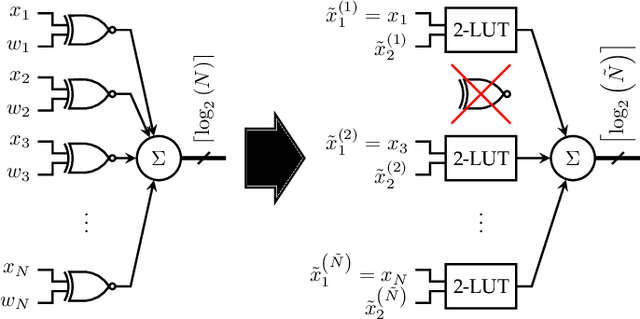

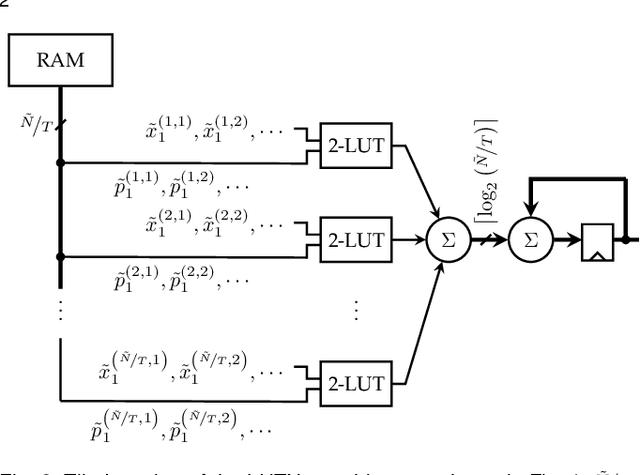
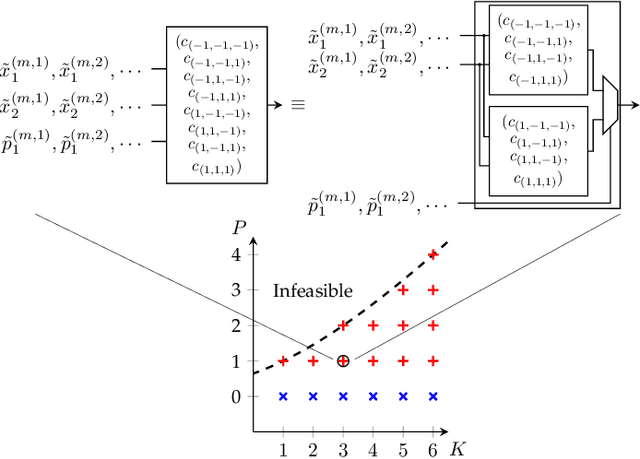
Abstract:Research has shown that deep neural networks contain significant redundancy, and thus that high classification accuracy can be achieved even when weights and activations are quantised down to binary values. Network binarisation on FPGAs greatly increases area efficiency by replacing resource-hungry multipliers with lightweight XNOR gates. However, an FPGA's fundamental building block, the K-LUT, is capable of implementing far more than an XNOR: it can perform any K-input Boolean operation. Inspired by this observation, we propose LUTNet, an end-to-end hardware-software framework for the construction of area-efficient FPGA-based neural network accelerators using the native LUTs as inference operators. We describe the realisation of both unrolled and tiled LUTNet architectures, with the latter facilitating smaller, less power-hungry deployment over the former while sacrificing area and energy efficiency along with throughput. For both varieties, we demonstrate that the exploitation of LUT flexibility allows for far heavier pruning than possible in prior works, resulting in significant area savings while achieving comparable accuracy. Against the state-of-the-art binarised neural network implementation, we achieve up to twice the area efficiency for several standard network models when inferencing popular datasets. We also demonstrate that even greater energy efficiency improvements are obtainable.
LUTNet: Rethinking Inference in FPGA Soft Logic
Apr 01, 2019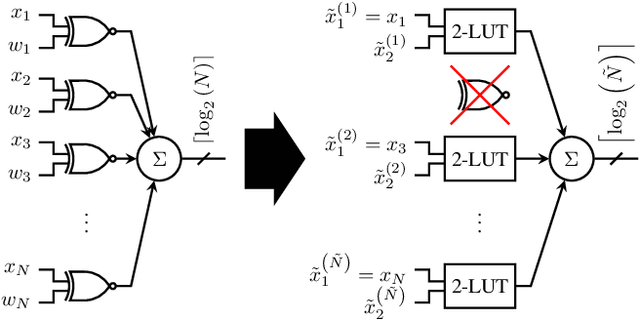
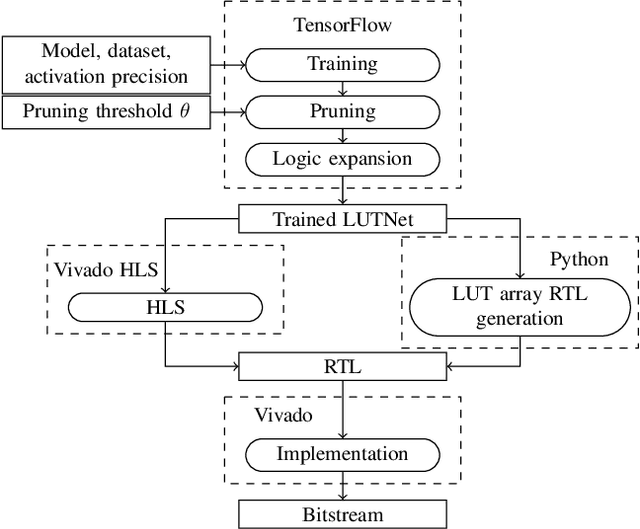
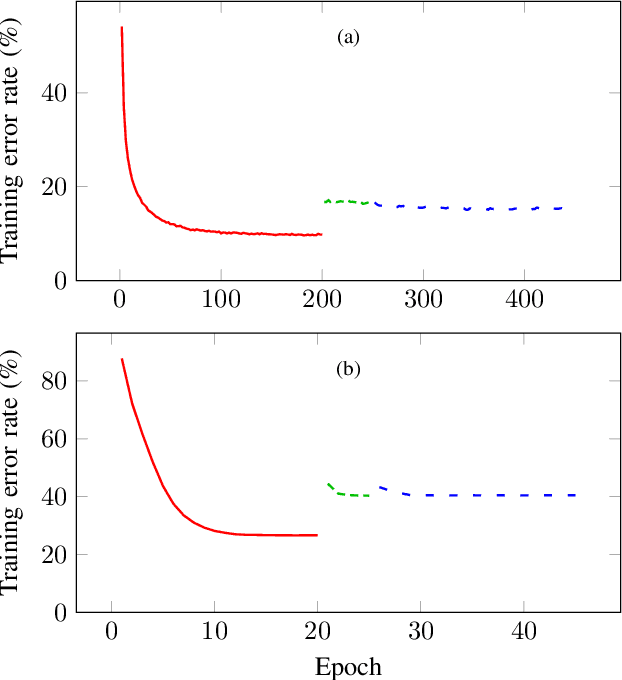
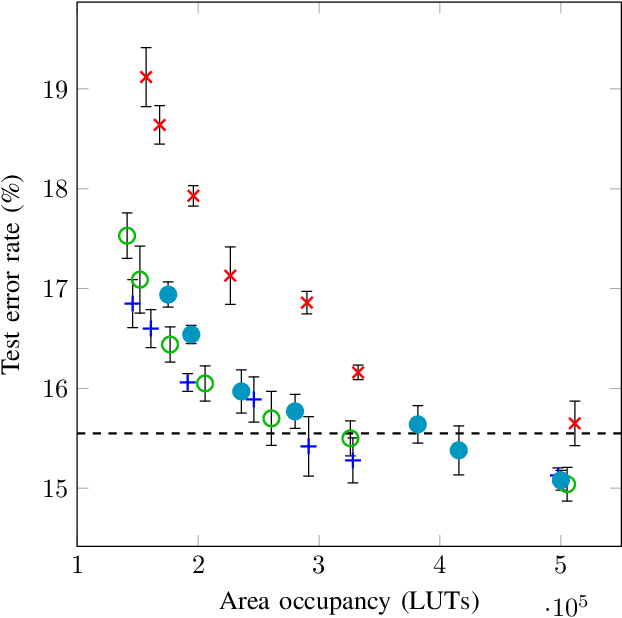
Abstract:Research has shown that deep neural networks contain significant redundancy, and that high classification accuracies can be achieved even when weights and activations are quantised down to binary values. Network binarisation on FPGAs greatly increases area efficiency by replacing resource-hungry multipliers with lightweight XNOR gates. However, an FPGA's fundamental building block, the K-LUT, is capable of implementing far more than an XNOR: it can perform any K-input Boolean operation. Inspired by this observation, we propose LUTNet, an end-to-end hardware-software framework for the construction of area-efficient FPGA-based neural network accelerators using the native LUTs as inference operators. We demonstrate that the exploitation of LUT flexibility allows for far heavier pruning than possible in prior works, resulting in significant area savings while achieving comparable accuracy. Against the state-of-the-art binarised neural network implementation, we achieve twice the area efficiency for several standard network models when inferencing popular datasets. We also demonstrate that even greater energy efficiency improvements are obtainable.
Deep Neural Network Approximation for Custom Hardware: Where We've Been, Where We're Going
Jan 21, 2019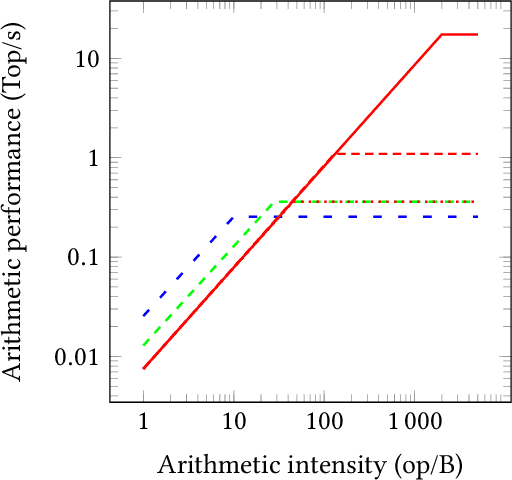
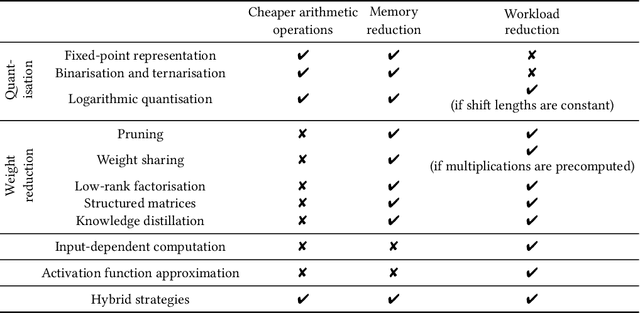
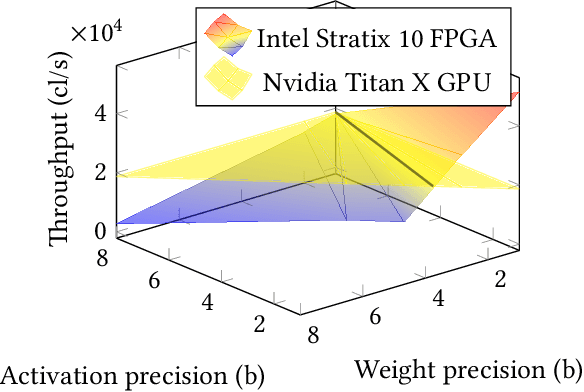
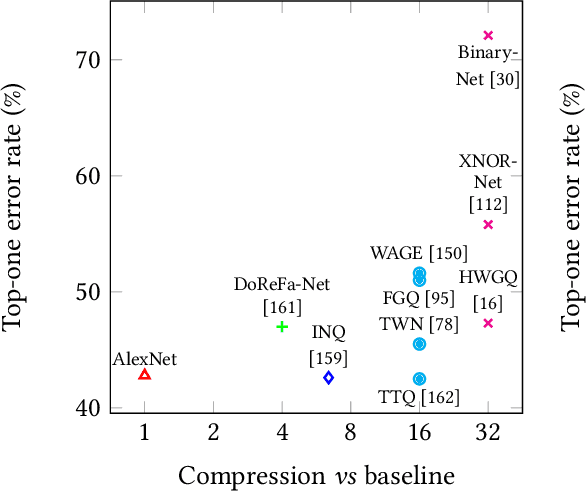
Abstract:Deep neural networks have proven to be particularly effective in visual and audio recognition tasks. Existing models tend to be computationally expensive and memory intensive, however, and so methods for hardware-oriented approximation have become a hot topic. Research has shown that custom hardware-based neural network accelerators can surpass their general-purpose processor equivalents in terms of both throughput and energy efficiency. Application-tailored accelerators, when co-designed with approximation-based network training methods, transform large, dense and computationally expensive networks into small, sparse and hardware-efficient alternatives, increasing the feasibility of network deployment. In this article, we provide a comprehensive evaluation of approximation methods for high-performance network inference along with in-depth discussion of their effectiveness for custom hardware implementation. We also include proposals for future research based on a thorough analysis of current trends. This article represents the first survey providing detailed comparisons of custom hardware accelerators featuring approximation for both convolutional and recurrent neural networks, through which we hope to inspire exciting new developments in the field.
Machine Learning for Antimicrobial Resistance
Jul 05, 2016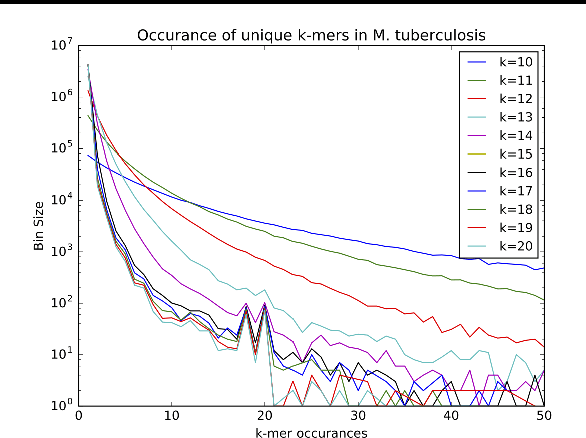
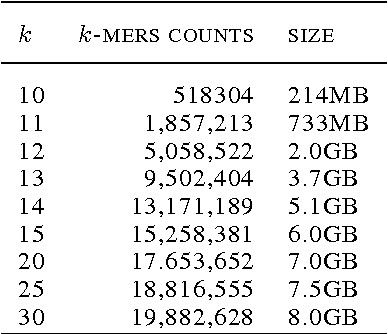
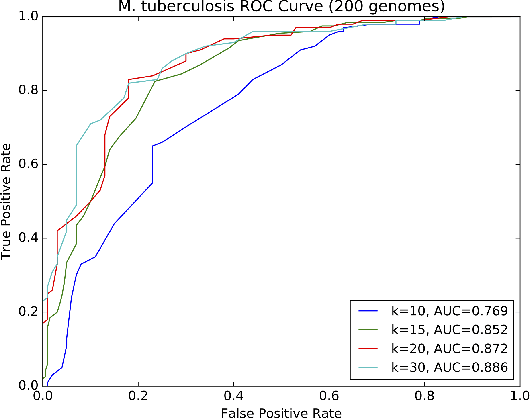
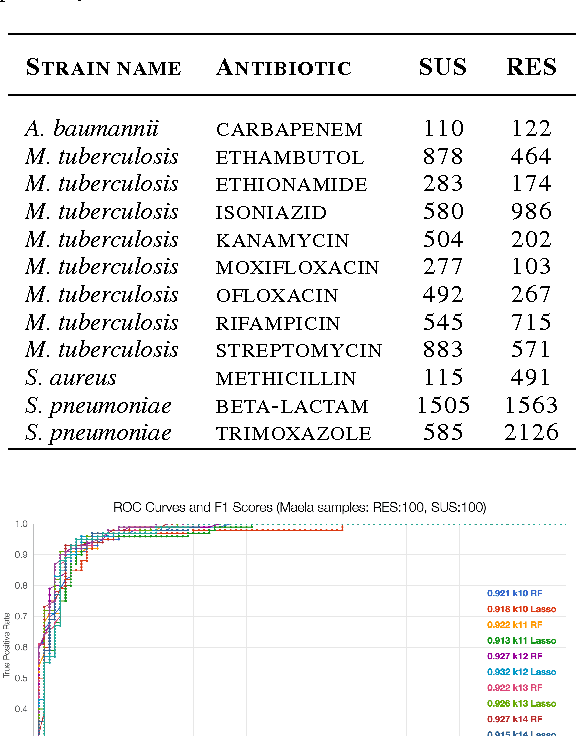
Abstract:Biological datasets amenable to applied machine learning are more available today than ever before, yet they lack adequate representation in the Data-for-Good community. Here we present a work in progress case study performing analysis on antimicrobial resistance (AMR) using standard ensemble machine learning techniques and note the successes and pitfalls such work entails. Broadly, applied machine learning (AML) techniques are well suited to AMR, with classification accuracies ranging from mid-90% to low- 80% depending on sample size. Additionally, these techniques prove successful at identifying gene regions known to be associated with the AMR phenotype. We believe that the extensive amount of biological data available, the plethora of problems presented, and the global impact of such work merits the consideration of the Data- for-Good community.
 Add to Chrome
Add to Chrome Add to Firefox
Add to Firefox Add to Edge
Add to Edge